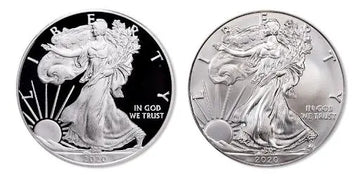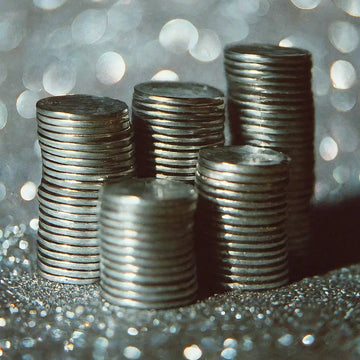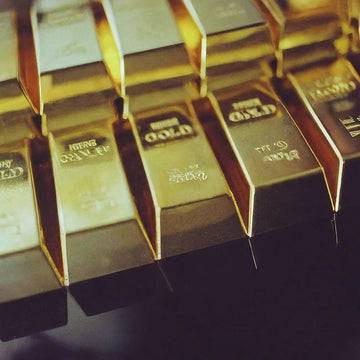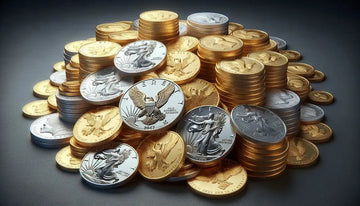In the world of coin collecting and investing, two common terms you'll come across are "proof coins" and "mint state." Understanding the distinctions between these two coin types is crucial for both enthusiasts and investors. In this article, we will explore the differences between proof coins and mint state, shedding light on their characteristics, production methods, and collectible value.
Proof Coins: Crafted for Perfection
Proof coins are specially made to showcase the highest level of craftsmanship and quality. Here's what sets them apart:
- Manufacturing Process: Proof coins are struck using a unique production process. The coin dies are meticulously prepared, polished, and cleaned, resulting in a highly reflective surface. The coins are struck multiple times with carefully controlled pressure to create sharp, detailed designs.
- Finish and Appearance: Proof coins feature a mirror-like, polished surface known as a "proof finish." This reflective quality enhances the intricate details of the design, creating a stunning visual effect. The fields (background) of proof coins are typically frosted, providing a contrast to the raised, polished devices.
- Limited Mintage: Proof coins are often produced in limited quantities, adding to their collectible appeal. Government mints and private mints issue proof coin sets or individual proof coins as part of their numismatic offerings.
- Collectible Value: Due to their exceptional quality, limited mintage, and aesthetic appeal, proof coins are highly sought after by collectors. They often command a higher premium compared to their bullion or circulation counterparts. Proof coin sets are popular among collectors who aim to complete a series or commemorate significant events.
Mint State Coins: Uncirculated Condition
Mint state coins, also known as uncirculated coins, represent coins that have never been circulated in everyday commerce. Here are their defining characteristics:
- Manufacturing Process: Mint state coins are struck using regular production methods, similar to coins intended for circulation. They undergo the standard minting process, with the coin dies being used to strike the blanks or planchets. However, mint state coins may receive additional quality control checks to ensure their overall appearance and lack of imperfections.
- Surface Condition: Mint state coins exhibit a pristine surface condition with no signs of wear or circulation marks. They are free from scratches, dents, and other blemishes commonly found on coins that have been in general circulation.
- Grading: Mint state coins are graded on a scale from 60 to 70 based on their overall condition and appearance. This grading process considers factors such as luster, strike quality, surface preservation, and eye appeal. Higher graded mint state coins, such as MS-65 or MS-70, are more desirable and carry a premium due to their superior condition.
- Investment and Collectible Value: While mint state coins are not specifically produced for collectors like proof coins, they still hold value for both investors and numismatists. Mint state coins can be acquired as bullion coins with a precious metal content or as numismatic coins with additional collector value.
Conclusion
In summary, the difference between proof coins and mint state lies in their production methods, finish, appearance, and collectible value. Proof coins are expertly crafted with a polished, mirror-like finish, limited mintage, and high collectible appeal. Mint state coins, on the other hand, represent coins in uncirculated condition, free from wear and circulation marks. Understanding these distinctions allows collectors and investors to make informed decisions when building their coin portfolios. Whether you're drawn to the artistic beauty of proof coins or the untouched condition of mint state coins, both types offer unique opportunities for enjoyment and potential value appreciation.





